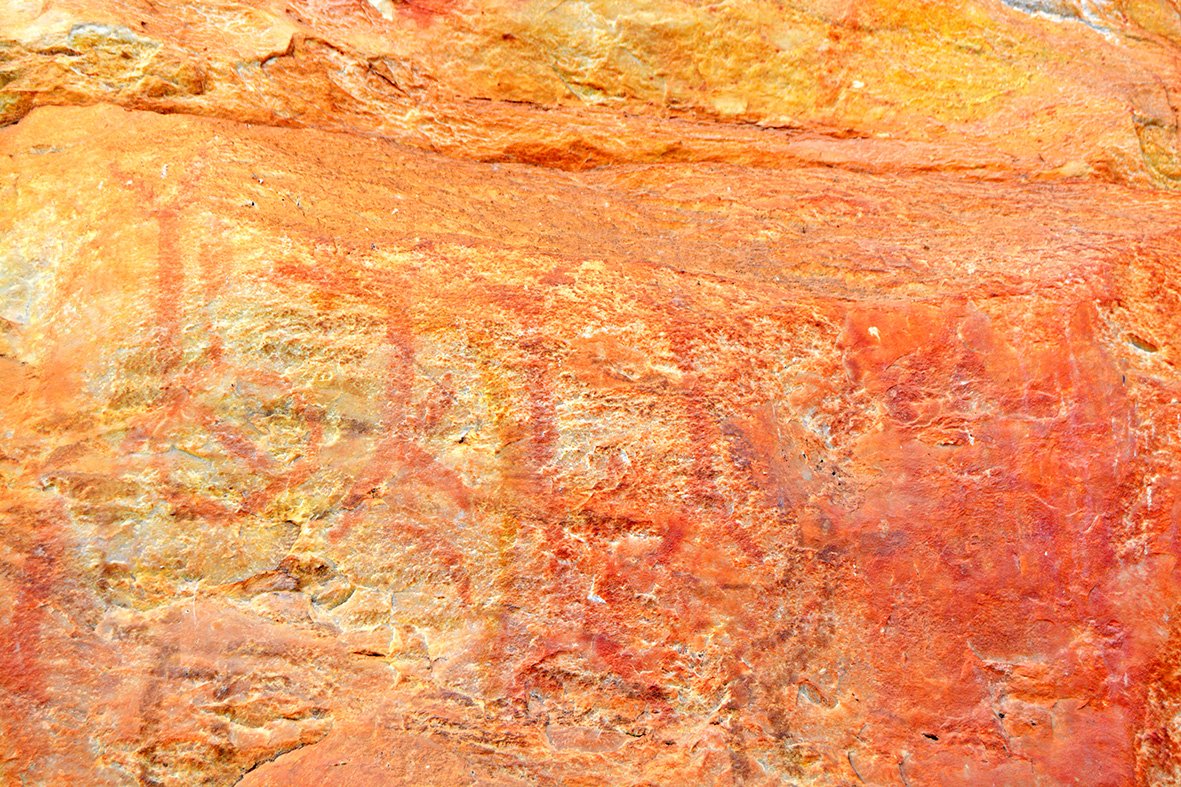The Art of Prehistory
Last weekend I fulfilled a lifelong dream. A four-hour drive along red earth roads through the mountains of Minas Gerais and I arrived at the paradisical village of Lapinha de Serra. A two-kilometre walk through tropical woodland, a canoe across a vast lagoon and there I stood gazing up at a multicoloured cliff. Shimmering in the pink, yellow, and orange rock surface, were a hundred and fifty separate paintings. Deer, scorpion, fish, capybara, monkeys, and unmistakable five fingered human figures. This was more than enough. But there was something else, far more mysterious. Abstract shapes and what looks like hieroglyphic non-representational code, quite possibly an early form of written communication. If you look carefully, you can clearly see a Y an inverted Y an X and vertical lines. Painted by hunter gatherers the images are thought to be anything between 7000 and 12000 years old. It was a highly emotional, humbling experience that almost brought me tears. Who were these people? What were they thinking? What language did they speak? And what did that ‘code’ mean? In the 1990s a controversy broke out in the anthropological community when a reconstructed skull belonging to a young woman nicknamed Luzia appeared to show distinct Afro-Aboriginal features. This seemed to suggest that there was a far older population that inhabited this part of Brasil before the three migratory waves that crossed the Bering Straits from Asia and subsequently wandered south through the Americas. However, despite the enticing questions posed by such a theory, most anthropologists now accept that bone structure is an unreliable indicator of origins, and subsequent DNA research has confirmed that Luzia and others like her, found in the same area, have a shared DNA code with populations in Siberia and Northern China. I sat at the foot of the cliff and tried to imagine these ancient Amerindians making brushes from animal hair, mixing pigments from ochres rich in iron and magnesium oxide, burnt bones, charcoal and plant seeds to produce paint with a natural fixative that has survived millennia. Perhaps the most remarkable thing about such places, that can be found across the planet, is that they manifest the transhistorical human compulsion to visually represent in both abstract and figurative forms, values, beliefs, and cosmological visions.



